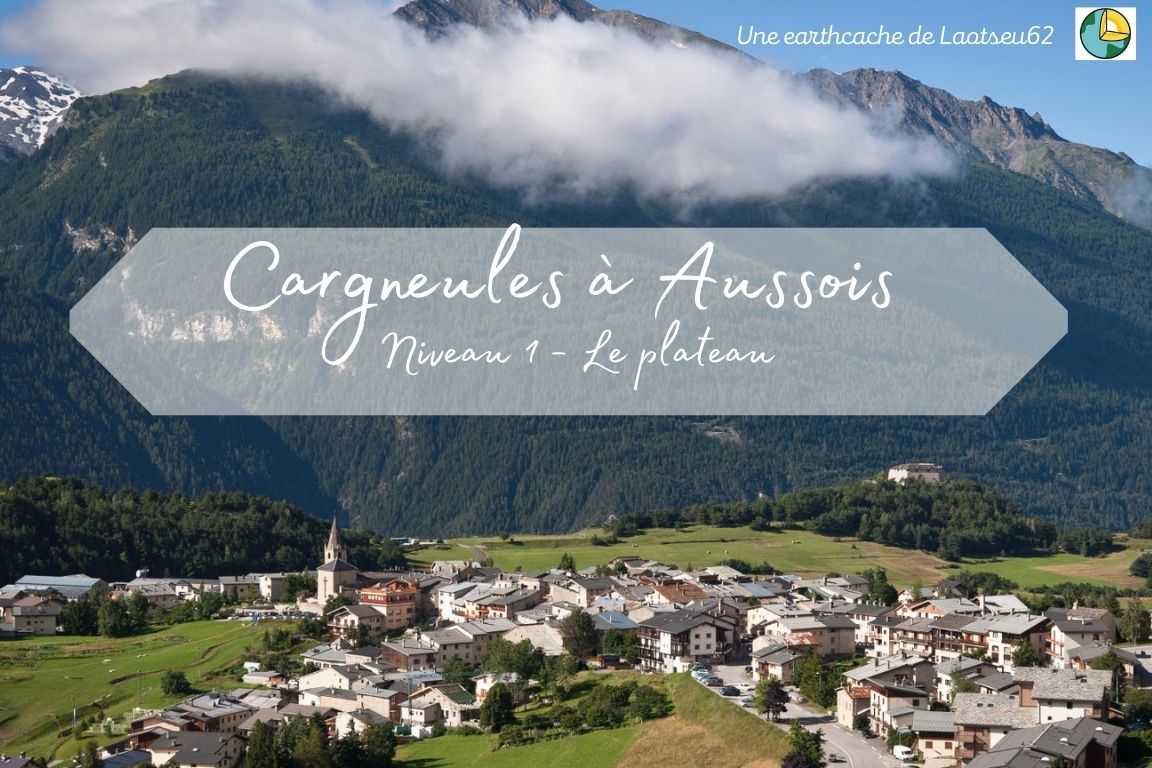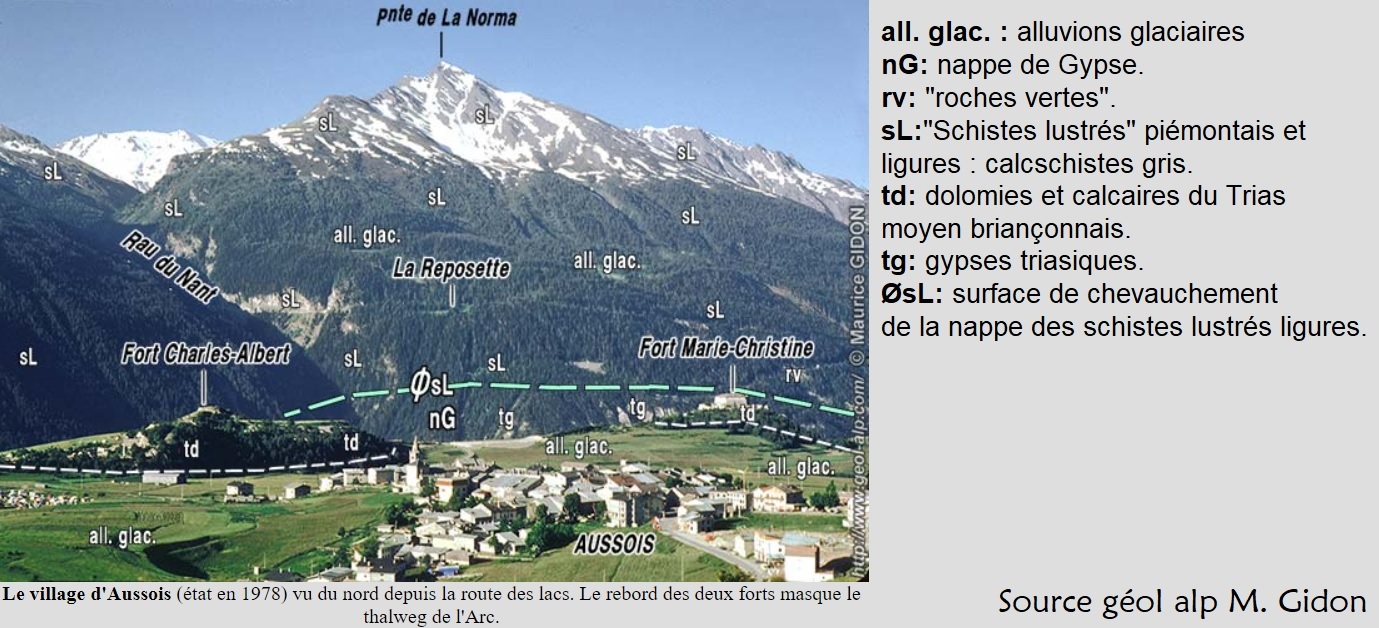
Vous êtes actuellement sur le plateau du village d'Aussois
Le plateau:
Les pentes, assez largement garnies d'alluvions glaciaires, constituent un plateau suspendu doucement incliné vers la vallée. Son rebord inférieur domine le thalweg de la rivière par des escarpements rocheux qui portent les forts de l'Esseillon. Le plateau d'Aussois doit son existence au fait qu'il est installé sur une dalle peu inclinée de calcaires et de dolomies triasiques. Il est délimité à l'Ouest par le cours du ruisseau Saint Benoit et à l'est par celui du ruisseau Saint Pierre.
La cargneule:
Cargneule ou Cornieule, corgneule, cargnieule, corniole est un terme d'origine suisse il s'agit d'une roche sédimentaire (c'est à dire une roche qui s'est formée à la surface de la Terre)
Elle a un aspect carié, vacuolaire (vacuole= cavité formée dans une roche), fréquemment porteuse de brèches.
De couleur virant du jaune au brun, rouille voir orangé, les cargneules forment des masses peu ou non stratifiées et donnent des reliefs en forme de ruines
Les cargneules sont dues à la transformation ("cargneulisation") de :
- Dolomies (roche sédimentaire d'origine marine riche en clacaire et magnésium) calcareuses,
- Calcaires dolomitiques
- Brèches sédimentaires ou tectoniques calcaréo-dolomitiques.
Au cours de la "cargneulisation", il y a dissolution de la dolomite par des eaux chargées en sulfates. Certains éléments sont dissous d'autres restent c'est ce qui donne cet aspect si particulier a cette roche.

Pour loguer cette earthcache:
Je rappelle qu'il n'y a pas de boite associée a cette earthcache vous devez effectuer des observations du descriptif et du terrain et répondre aux questions ci-dessous:
1/ Au PZ vous êtes face a un bloc de cargneule. Décrivez-le. (Couleur, taille, aspérités...)
2/ En observant votre environnement direct, diriez-vous que ce bloc a été apporté par l'homme ou est-il là de façon "natrurelle".
3/ En regardant vers le Nord où pouvez-vous voir de la cargneule?
4/ Prenez une photo de vous, de votre GPS ou de tout autre élément capable de vous identifer (logo, mascotte...) avec en fond le fort Marie Christine.
Loguez cette cache "Found it" et envoyez-moi vos propositions de réponses soit via mon profil, soit via la messagerie geocaching.com (Message Center), et je vous contacterai en cas de problème
You are currently on the plateau of the village of Aussois
The plateau:
The slopes, largely covered with glacial alluvium, form a suspended plateau gently inclined towards the valley. Its lower edge dominates the thalweg of the river by rocky escarpments which carry the forts of Esseillon. The Aussois plateau owes its existence to the fact that it is installed on a slightly inclined slab of limestone and Triassic dolomites. It is bounded to the west by the course of the Saint Benoit stream and to the east by that of the Saint Pierre stream.
The cargneule:
Cargneule or Cornieule, corgneule, cargnieule, corniole is a term of Swiss origin it is a sedimentary rock (i.e. a rock that formed on the surface of the Earth)
It has a decayed, vacuolar appearance (vacuole = cavity formed in a rock), frequently carrying breaches.
Color changing from yellow to brown, rust or even orange, the cargneules form little or not stratified masses and give reliefs in the form of ruins
Cargneules are due to the transformation ("cargneulisation") of:
Dolomites (sedimentary rock of marine origin rich in clacaire and magnesium) calcareous,
Dolomitic limestones
Calcareous-dolomitic sedimentary or tectonic breccias.
During the "cargneulisation", there is dissolution of dolomite by waters laden with sulphates. Some elements are dissolved, others remain, this is what gives this particular aspect to this rock.

To log this earthcache:
I remind you that there is no box associated with this earthcache you must make observations of the description and the terrain and answer the questions below:
1 / At PZ you are facing a block of cargneule. Describe it. (Color, size, roughness ...)
2 / By observing your direct environment, would you say that this block was brought by man or is it there in a "natural" way.
3 / Looking north where can you see cargneule?
4 / Take a picture of you, your GPS or any other element able to identify you (logo, mascot ...) with Fort Marie Christine in the background.
Log this "Found it" cache and send me your suggested answers either via my profile or via geocaching.com messaging (Message Center), and I will contact you in case of problem